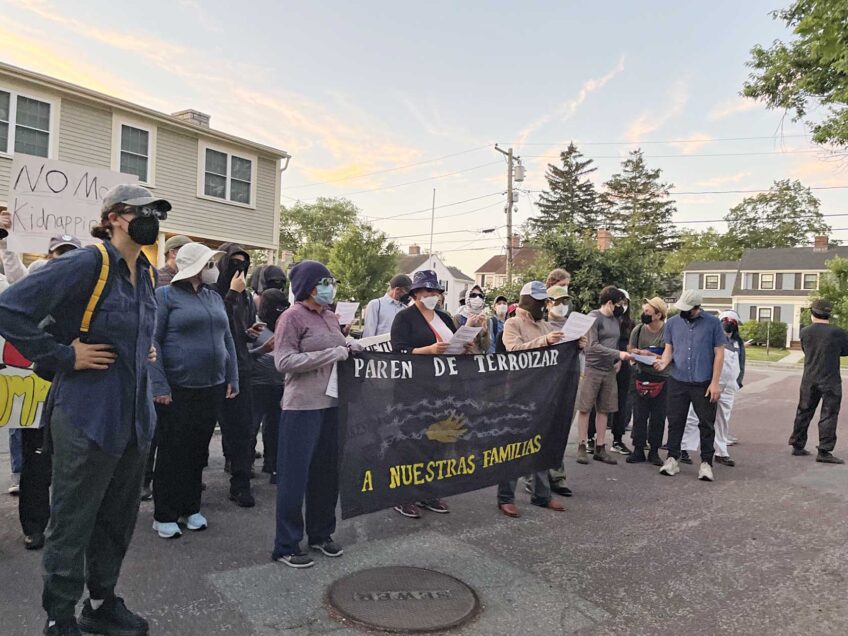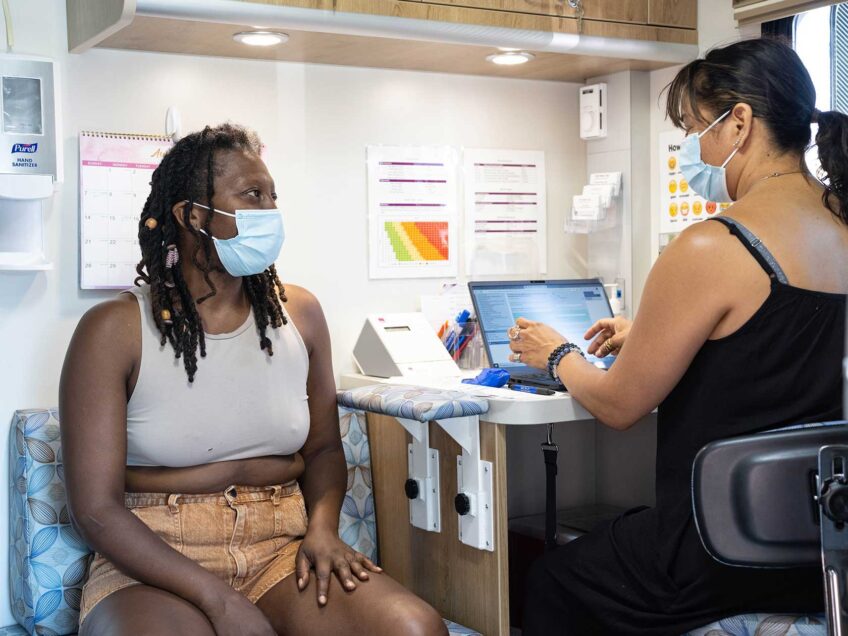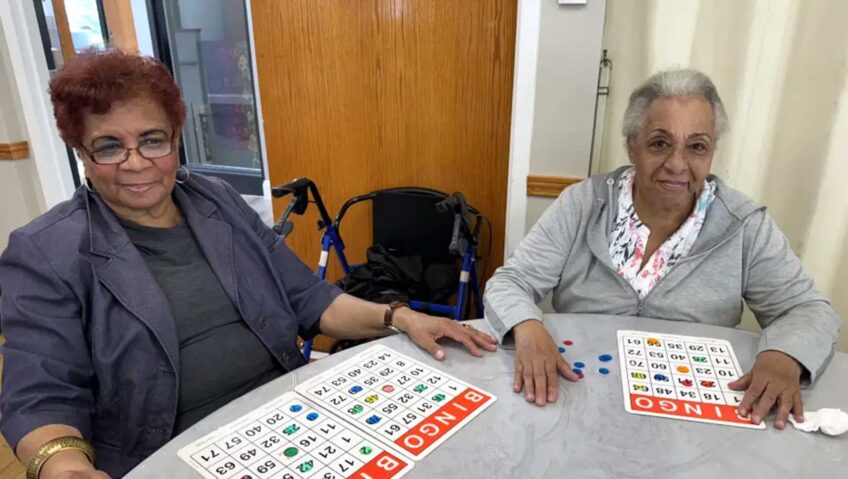Wealthy donors dominate charter question funding
Researchers delve into campaign finance records
Great Schools Massachusetts — the oldest of four ballot committees supporting a yes vote on Question 2 — points to charter waitlists as evidencing students’ strong demand for more such schools and has gathered children and families for high-profile lift-the-cap rallies. But Maurice Cunningham, associate professor of political science at the University of Massachusetts, says it appears that the campaign activity is not being generated by a broad base of Massachusetts families and students but rather by a small number of wealthy donors, including many from out of state.
On the web
Cunningham’s MassPoliticalProfs blog: http://blogs.wgbh.org/masspoliticsprofs/2016/8/10/dark-money-great-schools-ma-tv-ad/
EduSchyster’s Q&A with Cunningham: http://edushyster.com/family-affair/
GS for MA lobbying records: www.sec.state.ma.us/LobbyistPublicSearch/CompleteDisclosure.aspx?DisclosureId=50202&Version=60688
Cunningham wrote on WGBH’s MassPoliticsProfs blog that GSMA’s budget has been bolstered significantly by contributions from affluent financial industry investors as well as from 501(c)(4)s — a kind of nonprofit that engages in political spending without disclosing the identity of its own funders.
The problem, activists say, is that money talks, and in a campaign, it is crucial to know whose voice is speaking.
Question 2 is becoming one of the most expensive ballot fights in state history. GSMA has promised to spend $18 million on the campaign to pass it, while teachers unions have promised $12 million to oppose it.
Meet the backers
When ballot committees run TV ads, they are required by law to reveal the five highest contributing individuals or entities that donated more than $5,000 within the past year.
Save Our Public Schools, the committee advocating to keep the charter school cap, is largely funded by teachers’ unions. A recent SOPS ad — pegged by the Boston Herald to cost $800,000 — identified three groups passing the $5K spending mark, all of them unions: the Massachusetts Teachers Association, the American Federation of Teachers and the National Education Association.
Great Schools Massachusetts’s TV ad campaign — costing $2.3 million, according to the Herald — lists Education Reform Now Advocacy, Expanding Educational Opportunities, Families for Excellent Schools-Advocacy, Strong Economy for Growth and the similarly-named Great Schools for Massachusetts.
Families for Excellent Schools, which seems to be the parent organization behind FES-Advocacy, is a New York-based nonprofit with Wall Street ties. Education Reform Now Advocacy’s board primarily comprises Wall Streeters as well, according to the Center for Media and Democracy. The 501(c)(4) status of ERNA, Strong Economy for Growth and Families for Excellent Schools Advocacy carries with it some opaqueness over their money’s origin.
While it is too early for ballot campaigns to be required to file their 2016 finances, because GSMA launched its campaign prior to this year, its 2015 report is available. According to that report, 95 percent of GSMA’s 2015 funding — roughly $475,000 — came from 14 sources: thirteen individuals and Strong Economy for Growth, one of the 501(c)(4)s listed in its 2016 TV ad.
Money talks
Money is a major influencer in statewide ballot campaigns because it directly relates to how many voters hear that side’s message, said David Cence, senior vice president at Solmon McCown, a political consulting company not engaged on either side of the issue.
“In a state with 6.7 million people, it takes a considerable amount of resources to wage an air battle, to create commercials and messaging,” Cence told the Banner in a phone interview. “At the end of the day, most will make decisions on how they’re going vote based on the information that’s provided to them, and that’s through TV ads.”
In most ballot campaigns, voters are unlikely to pay attention to where committees get their funding, he said. It takes time to unpack that information, and many people simply focus on the messaging that reaches them.
Public relations
Campaigners on both sides of the ballot question engage public relations firms to advance their message.
Save Our Public School’s PR effort includes Crawford Strategies, and, according to Politico, ad company The New Media Firm. The committee’s door-knocking canvassers include a mix of volunteer and paid members.
GSMA’s PR firms include Slowey McManus, Eileen O’Connor of Keyser Public Strategies and Josiane Martinez of Archipelago Strategies Group. According to information filed with the OCPF, in 2015, GSMA paid $305,000 to J.E.F. Associates Inc. for signatures.
In 2014, the National Alliance for Public Charter schools released a messaging guidebook for charter school proponents that recommended words and phrasing to use in framing issues to elicit a more positive response from parents, policymakers and voters. The guidebook draws on research by Glover Park Group, a strategic communications and government affairs firm, and The Word Doctors, a prominent message creation company whose CEO, Frank Luntz, is known for recasting the “estate tax” as the “death tax” and “drilling for oil” as “exploring for energy.”
Unions vs Wall Street?
Cunningham suggested the outcome of Question 2 will reveal which force is more powerful: unions and their capacity to organize volunteers or the Yes on 2 committees’ extensive funding pool.
“[The teacher unions] have grassroots,” Cunningham told the Banner. “They can put people on the streets and can organize. The other side is entirely money. It doesn’t have any of that — organizing facility, people on the streets — unless they pay for them. I think it’s a big test.”
In an interview on the education blog EduSchyster, Cunningham pointed to GSMA’s paid signature gathering as an indication that the committee’s appeal is too weak to generate sufficient volunteers.
It is unclear if that will matter, come voting day.
Peggy Wiesenberg, a parent of Boston Public School graduates and SOPS supporter, said she fears that big spenders will drown out local residents.
“I am very concerned about business, corporate and outside groups — outside money — being pumped into the campaign,” she told the Banner. “[Ballot initiatives] are supposed to be part of our democratic process governed by the people, but when they’re dominated by big money that we’re seeing poured into this type of ballot initiative, it’s very challenging to beat.”
However, Jennifer Berkshire, the blogger behind EduSchyster, says money does not always trump a good ground game. Significant spending, to the tune of three-quarters of a million dollars, had a backfiring effect in the charter expansion campaign in Nashville, she noted.
“All that money served to do was make people very skeptical of them and their agenda,” Berkshire told the Banner. “If you can’t generate the kind of passion that gets people going door to door, talking to neighbors and going out on melting hot days to neighborhood fairs, you’re not going to win.”
Political consultant Cence told the Banner that historically, the extent to which a ballot campaign is grassroots does not seem to have as much impact as how well the campaign organizes, creates its message and utilizes its available resources to spread that message.
Bigger than MA
The presence of investor money in school system campaigns prompts some to speculate on the broader picture.
Cunningham said he believes the charter school debate is a piece of a larger battle of moneyed individuals seeking smaller government and fewer taxes, against unions, which advocate for public funding and, through their ability to organize, are the strongest counterforce to the influence of money on politics.
In Berkshire’s view, backers are funding charter expansions to advance a more free market schooling ideology. This side, she says, seeks to further a model in which students and schools compete to prove themselves and win the most resources, which stands in contrast to the more traditional model of education as a universal social program.
“They feel like the old idea that setting up a universal system for all kids, we tried that and it failed,” Berskshire said. “What they’d rather do is bet on the winners” and make selective investments, she said.






